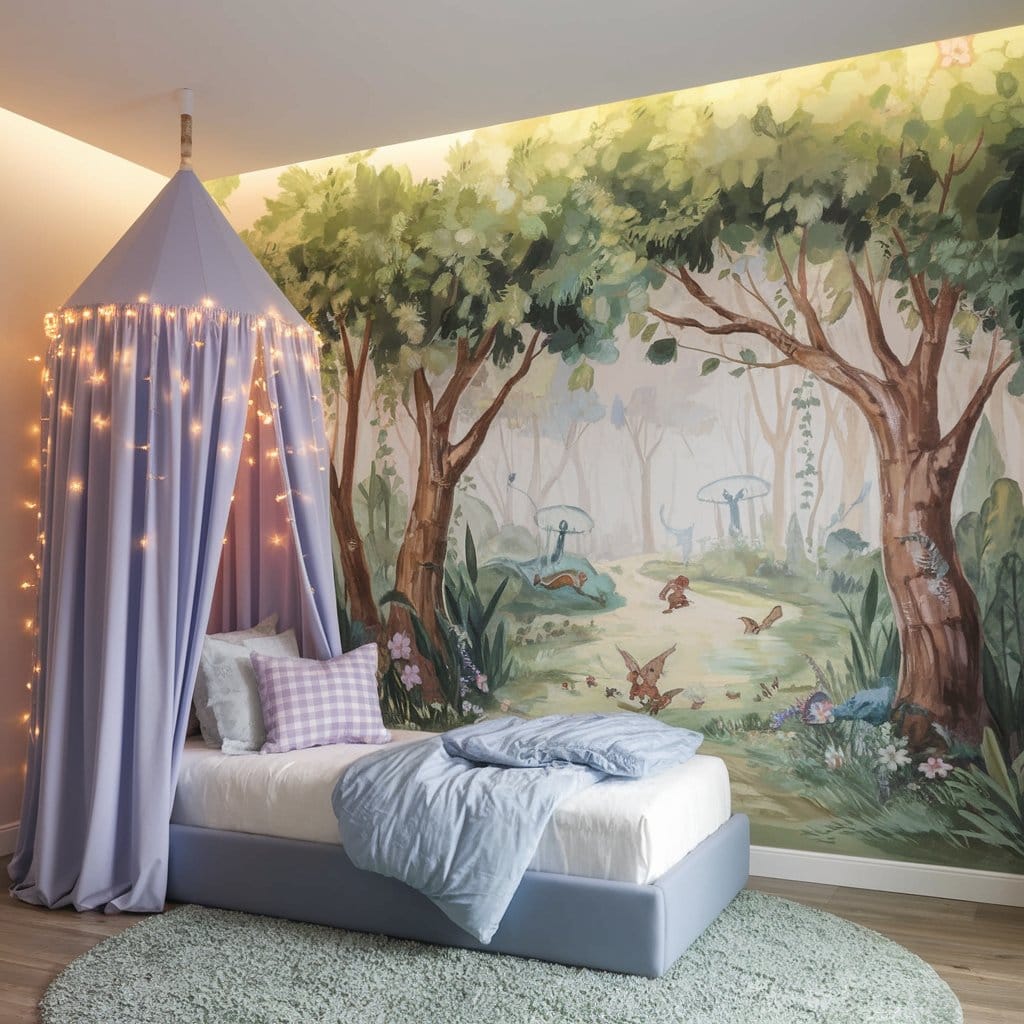Kids’ Bedroom Interior Design
Introduction
Welcome to the world of kids’ bedroom interior design! Creating a beautiful and functional space for your little ones is not only exciting but also essential for their growth and development. A well-designed bedroom can stimulate their imagination, encourage creativity, and provide a cozy retreat for restful sleep. In this article, we will explore various design ideas, tips, and tricks to help you transform your child’s bedroom into a space they will love.
Materials/Tools Required
Before diving into the design process, let’s gather the necessary materials and tools:
– Paint and brushes
– Wallpaper or wall decals
– Furniture (bed, desk, chair, storage)
– Bedding and pillows
– Curtains or blinds
– Lighting fixtures
– Decorative accessories
– Floor coverings (carpets or rugs)
Step-by-Step Instructions
Creating a kids’ bedroom that is both functional and visually appealing involves several steps. Let’s break down the process:
1. Choose a Theme
Start by selecting a theme that reflects your child’s interests and preferences. Whether it’s outer space, princesses, sports, or animals, a theme will set the foundation for the entire design. Get your child involved in the decision-making process to ensure their bedroom truly represents their personality.
2. Pick the Right Colors
Colors play a significant role in creating the desired atmosphere in a bedroom. Soft and soothing shades like pastels or neutrals can promote relaxation and better sleep, while vibrant colors can stimulate energy and creativity. Consider using a combination of colors that complement the chosen theme and create a harmonious look.
3. Create Functional Zones
Divide the bedroom into functional zones to optimize space and promote organization. Allocate areas for sleeping, studying, playing, and storage. Use furniture and room dividers to delineate these zones while maintaining a cohesive design.
4. Select Appropriate Furniture
Choose furniture that is both practical and visually appealing. Opt for pieces that can grow with your child, such as convertible cribs that transform into toddler beds or desks with adjustable heights. Consider the size of the room and ensure that the furniture doesn’t overwhelm the space.
5. Add Creative Storage Solutions
Keep clutter at bay by incorporating creative storage solutions. Utilize under-bed storage boxes, wall-mounted shelves, and multi-functional furniture with built-in storage compartments. Teach your child the importance of organization by involving them in the tidying process.
6. Personalize with Decorative Touches
Add personal touches to make the room feel special and unique. Hang personalized wall art, display their artwork in frames, or create a gallery wall showcasing their achievements. Incorporate their favorite toys or hobbies into the decor to create a space that truly feels like their own.
Variations/Alternative Approaches
While following a specific theme can provide a cohesive look, don’t be afraid to think outside the box. Consider alternative approaches to kids’ bedroom interior design:
1. Gender-Neutral Design
Move away from traditional gender-specific themes and create a gender-neutral design. Opt for neutral colors, natural materials, and versatile furniture that can be adapted as your child grows.
2. Minimalist Design
Embrace a minimalist approach by focusing on simplicity and functionality. Utilize clean lines, open spaces, and multi-purpose furniture to create a clutter-free environment that promotes a sense of calm.
3. Nature-Inspired Design
Bring the beauty of the outdoors inside by incorporating nature-inspired elements. Use earthy tones, botanical prints, and eco-friendly materials to create a serene and environmentally conscious space.
Common Mistakes to Avoid
When designing your child’s bedroom, it’s essential to be mindful of common mistakes that can hinder the overall aesthetic and functionality:
1. Overcrowding the Space
Avoid overfilling the room with furniture and decor. Leave enough space for your child to move around freely and for their imagination to flourish. Remember, less is often more.
2. Neglecting Proper Lighting
Ensure that the room has sufficient lighting for various activities. Incorporate a mix of natural light, overhead lighting, task lighting, and ambient lighting to create a well-lit and inviting space.
3. Ignoring Safety Measures
Prioritize safety by securing furniture to the wall, using cordless window coverings, and opting for non-toxic materials. Regularly inspect the room for any potential hazards and make necessary adjustments.
Tips and Tricks for your Kids Bedroom Interior Design
Here are some additional tips and tricks to enhance your kids’ bedroom interior design:
1. Incorporate a Reading Nook
Create a cozy reading nook by adding a comfortable chair or bean bag, a bookshelf, and soft lighting. Encourage your child to develop a love for reading by providing a dedicated space for their favorite books.
2. Use Wall Decals for Easy Updates
If your child’s interests change frequently, consider using removable wall decals instead of permanent wallpaper. This allows for easy updates and modifications as their preferences evolve.
3. Encourage Artistic Expression
Allocate a wall or a chalkboard for your child to unleash their creativity. Hang a wire grid or a corkboard to display their artwork and crafts, fostering a sense of pride and accomplishment.
Conclusion
Designing a kids’ bedroom is an exciting journey that allows you to create a space where your child can thrive and feel truly at home. By considering their interests, incorporating functional elements, and adding personal touches, you can design a bedroom that sparks their imagination and provides a nurturing environment. Embrace creativity, have fun with the process, and watch as your child’s dreams come to life in their very own bedroom.
FAQs
1. How do I choose a theme for my child’s bedroom?
Consider your child’s interests, hobbies, and favorite characters when choosing a theme. Get their input and involve them in the decision-making process to ensure they feel connected to their bedroom design.
2. How can I make a small bedroom feel spacious?
Opt for light colors, utilize mirrors to create an illusion of space, and maximize storage by utilizing vertical space. Choose furniture with built-in storage solutions to minimize clutter.
3. How often should I update my child’s bedroom design?
It depends on your child’s preferences and age. As they grow and their interests change, you might consider updating the design every few years. However, by choosing timeless elements and incorporating versatile furniture, you can easily make small updates without completely redoing the room.


